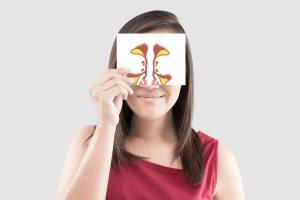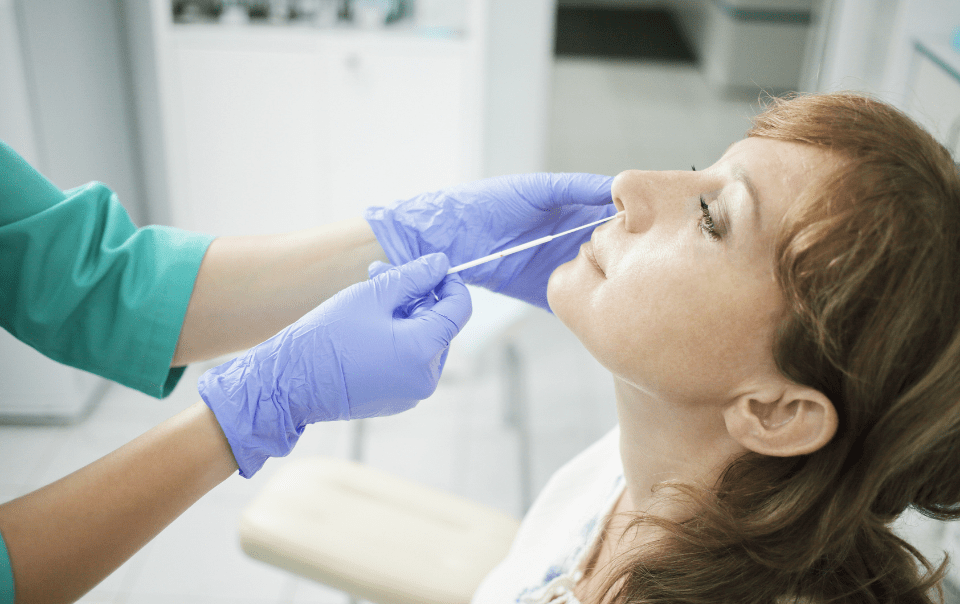Living with the relentless symptoms of acute sinusitis is akin to a daily struggle against an invisible force. Like an unwelcome companion, sinus pressure settles behind the eyes, transforming simple tasks into arduous feats. Every breath feels like a negotiation with congestion, as nasal passages play host to an unrelenting blockade. Facial pain becomes an uninvited guest, joining the sinus party with throbbing persistence. The constant fatigue, a silent accomplice, dampens your vitality and clouds even the sunniest days.
Amid this sinus symphony, sleep becomes a battlefield, interrupted by the drumbeat of discomfort. It’s not merely a minor bout of congestion; it’s a skirmish against daily life’s vibrancy. The relentlessness of acute sinusitis is a reminder that sometimes, even the smallest part of the body can have a disproportionate impact on our overall well-being.
Fortunately, a sinus specialist in Los Angeles can transform your daily struggles into relief. Continue reading to learn how acute sinusitis treatment can help you reclaim your energy, breathe freely, and embrace your vitality.
Acute Sinusitis: Causes and Symptoms
Sinusitis, a malady with diverse roots, emerges from viral infections, bacterial invaders, and allergens. Unraveling its complexity guides tailored treatments to alleviate the discomfort arising from these varied culprits.
Viral sinusitis often develops after having the common cold, flu, and even COVID-19. Symptomatic treatment is often necessary for relief.
Bacterial infections are often secondary to viral ones. Bacterial-induced sinusitis often causes prolonged symptoms, many of which are not very responsive to preliminary and over-the-counter treatments. The most notable culprits include Streptococcus pneumoniae and Haemophilus influenzae.
The most commonly reported symptoms of acute sinusitis include sinus pressure, facial pain, congestion, fatigue-induced fog, headaches, cough, a reduced sense of smell/taste, and postnasal drip.
Distinguishing Viral vs. Bacterial Sinusitis
Distinguishing between viral and bacterial sinusitis is crucial for effective treatment. Viral sinusitis often arises from common colds, showcasing symptoms like nasal congestion and cough. Viral-induced sinusitis symptoms often resolve on their own, while bacterial sinusitis symptoms are much more persistent and severe. Bacterial sinus infections typically require antibiotics. An evaluation by a sinus treatment specialist in Los Angeles is necessary for an accurate diagnosis.
Acute Sinusitis Treatment in Los Angeles
Acute sinusitis treatments fall into several categories:
Symptomatic Relief: Nasal decongestants and saline irrigation help alleviate congestion. Pain relievers, such as acetaminophen or ibuprofen, can address discomfort.
Antibiotics for Bacterial Sinusitis: Amoxicillin is often the first-line antibiotic for uncomplicated bacterial sinusitis. Other options may be considered based on individual factors. The typical course of antibiotics for bacterial sinusitis is 5-10 days. Completing the full course is essential to prevent antibiotic resistance.
Nasal Corticosteroids: These anti-inflammatory sprays reduce sinus inflammation and congestion. They are particularly beneficial in cases of allergic or chronic sinusitis.
Immunotherapy: Allergen immunotherapy is prescribed to desensitize the immune system’s reaction to triggering allergens and alleviate symptoms.
Steam Inhalation: Inhaling steam can provide relief by moisturizing nasal passages and promoting drainage. Adding essential oils like eucalyptus may enhance the soothing effect.
Avoiding Triggers: Steering clear of irritants like cigarette smoke and addressing underlying allergies aids recovery. Adequate hydration supports mucus clearance.
Surgical Options for Severe Acute Sinusitis Cases
Persistent or recurrent cases may require more extensive evaluation and advanced treatment. A consultation with an ENT/sinus specialist is necessary.

Functional Endoscopic Sinus Surgery (FESS) is another minimally invasive procedure that employs a thin, flexible endoscope to navigate and precisely remove obstructive sinus tissues, promoting improved drainage and airflow. FESS is a beacon of hope for those grappling with persistent sinusitis, nasal polyps, or structural abnormalities hindering sinus function. By addressing root causes, FESS not only addresses the root causes of infection it also alleviates symptoms, thus enhancing breathing comfort and overall quality of life.
Balloon Sinuplasty is a less invasive alternative to traditional sinus surgery. This procedure employs a small, flexible balloon catheter to gently open blocked sinus passages to restore drainage and relieve sinus pressure. Unlike conventional methods, Balloon Sinuplasty preserves surrounding nasal tissues, minimizing patient discomfort and downtime.
Deviated Septum Repair (Septoplasty) is ideal for patients experiencing breathing difficulties and sinus issues from a misaligned nasal septum. The procedure improves airflow, alleviates congestion, and, in many cases, enhances the aesthetic appearance of the nose.
Minimally Invasive Image-Guided Endoscopic Sinus Surgery (MIGSS) addresses chronic sinusitis, nasal polyps, and other issues, promoting optimal outcomes. With smaller incisions and reduced tissue disruption, patients experience faster recovery and diminished discomfort. MIGSS transforms sinus care and elevates the patient experience, making advanced and effective treatment accessible for those seeking lasting relief from their sinus struggles.
Revision Sinus Surgery is for individuals grappling with persistent sinus issues after prior interventions. This specialized procedure addresses challenges left unresolved by previous surgeries. Whether facing recurrent sinusitis, nasal polyps, or structural issues impeding proper airflow, Revision Sinus Surgery utilizes advanced techniques to meticulously revisit and refine the initial procedure.
Acute Sinusitis Prevention
Preventing the discomfort of acute sinusitis involves proactive steps. Regular hand washing minimizes exposure to viruses, a common trigger. Avoiding close contact during respiratory illnesses reduces contagion risks. Managing allergies through proper hygiene and seeking prompt treatment curtails potential sinusitis instigators. Adequate hydration ensures optimal mucus flow, combating sinus congestion.
Practicing good respiratory etiquette by covering your mouth during coughs and sneezes safeguards against spreading infections. Additionally, addressing underlying conditions like nasal polyps or structural abnormalities is pivotal. Embracing these preventive measures becomes a shield, fortifying against the onset of acute sinusitis and fostering a life free from sinus-related tribulations.
Recognizing Warning Signs
Navigating the onset of acute sinusitis begins with recognizing its subtle warning signs. Persistent nasal congestion, accompanied by facial pressure or pain, signifies potential trouble. A lingering cough, especially following a cold, warrants attention. If fatigue lingers amid seemingly minor symptoms, it could indicate sinus distress. Disrupted sleep patterns, coupled with worsening symptoms, serve as red flags. Recognizing the onset of acute sinusitis involves keen observation of these indicators, prompting timely intervention. Individuals can take proactive measures by heeding these warning signs, seeking relief swiftly, and ensuring sinus discomfort doesn’t evolve into a prolonged and cumbersome ordeal.
Individualized Care Plans
Combatting acute sinusitis demands individualized care plans. Recognizing that each case is unique, healthcare professionals tailor treatments to specific symptoms and patient needs. Whether employing antibiotics for bacterial infections or recommending nasal decongestants for congestion relief, these personalized strategies address the root causes. Individualized care plans not only enhance treatment efficacy but also empower patients in their journey to swift relief, ensuring a bespoke approach that aligns with the nuances of their sinus condition.
Conclusion: A Holistic Approach to Acute Sinusitis
In conclusion, tackling acute sinusitis mandates a holistic approach. By embracing a comprehensive strategy that considers symptoms, triggers, and individual health nuances, individuals pave the way for optimal relief. From recognizing warning signs to seeking timely treatment, each step in the process plays a pivotal role. This holistic perspective addresses the immediate discomfort and fortifies against future bouts, fostering enduring sinus health. It’s a journey where informed decisions and a collaborative healthcare approach pave the way for a life free from sinus-related impediments.

